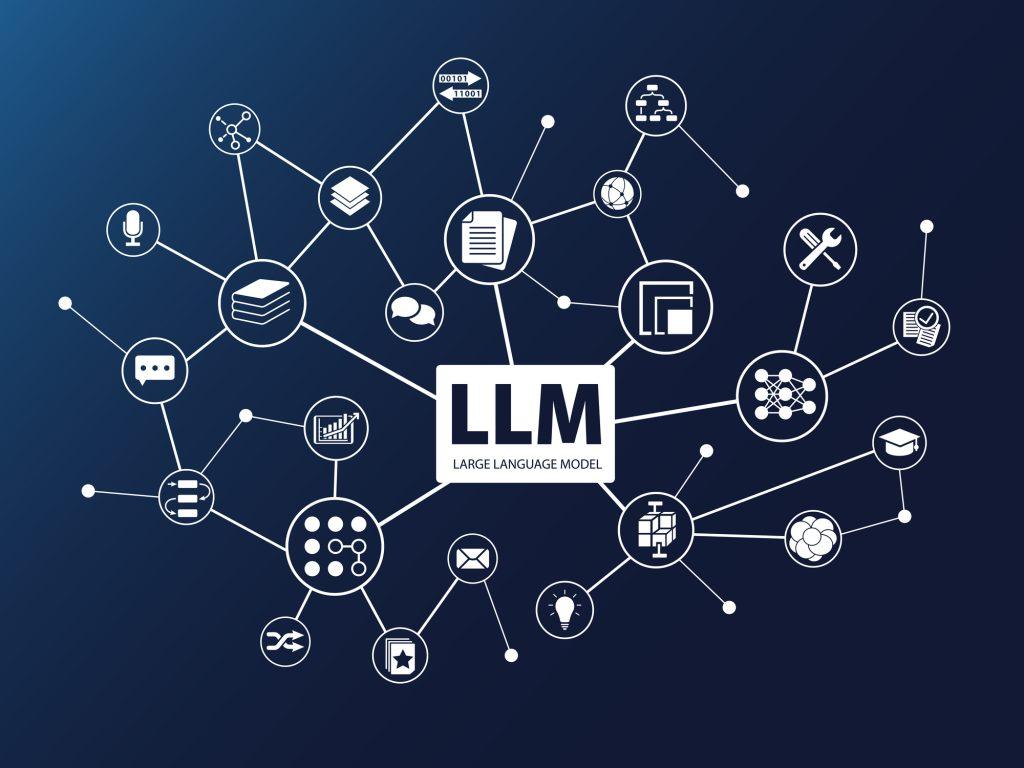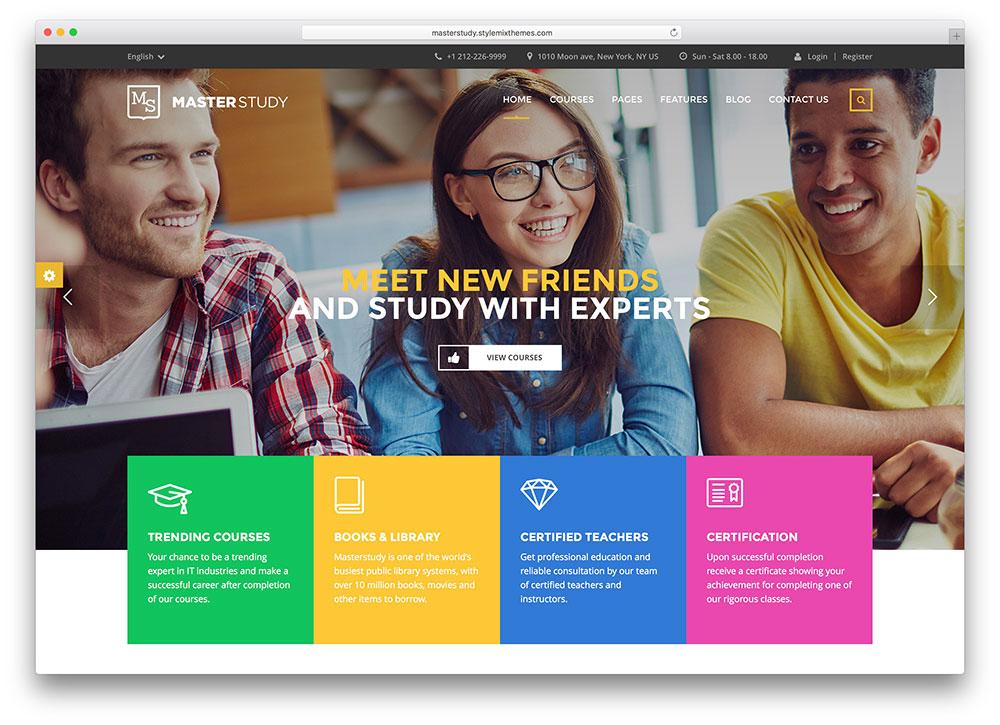Have you ever wondered how your favorite voice assistant seems to understand you better every day,or how chatbots are becoming increasingly adept at carrying on conversations that feel almost human? Welcome to the engaging world of Large Language Models,or LLMs for short! These remarkable AI systems have revolutionized the way we interact with technology,making it more intuitive and engaging.Whether you’re a tech enthusiast or just curious about the latest innovations, understanding LLMs is crucial in today’s digital landscape. In this article, we’ll break down what Large Language Models are, how they work, and highlight over 14 of the best LLMs currently available. By the end, you’ll not onyl grasp the magic behind these technological marvels but also discover how they can enhance your everyday life. Ready to dive in? Let’s explore the universe of LLMs together!
Understanding the Basics of Large language Models and Their Impact
Large Language Models (LLMs) are a groundbreaking innovation in the realm of artificial intelligence, fundamentally changing how we interact with technology. These models, built on deep learning architectures, are designed to understand, generate, and manipulate human language with remarkable proficiency. By leveraging vast amounts of text data, LLMs can perform tasks ranging from simple text generation to complex language understanding. The implications of their capabilities are vast, influencing numerous sectors including education, healthcare, and customer service.
The architecture of LLMs, frequently enough based on transformer models, is key to their performance. They utilize mechanisms like self-attention to process input data more efficiently, allowing them to manage and generate contextually relevant responses. This capability makes them exceptionally versatile; they can engage in conversation, write essays, generate code, and even create poetry. Such proficiency has led to their increasing adoption in various applications, showcasing just how integral language models have become in our digital landscape.
One of the primary impacts of LLMs is their ability to democratize information. By enabling users to access and interact with data in natural language, they break down barriers that once existed in accessing knowledge. This can empower individuals to learn new topics, seek assistance, or even enhance their productivity by automating routine tasks.Consider the following benefits of LLMs:
- Enhanced Interaction: They can bridge language gaps, translating and interpreting multiple languages seamlessly, thus fostering global connectivity.
- Content Creation: LLMs assist writers and marketers in generating creative content, saving time and inspiring originality.
- Personalized Learning: They provide tailored educational experiences, adapting to individual learning styles and paces.
However, the rise of LLMs is not without challenges. Ethical considerations surrounding bias in training data, misinformation, and user privacy are critical issues that developers and stakeholders must address. As we integrate these models into everyday applications, it’s crucial to ensure they are used responsibly, maintaining transparency and accountability. This balance will determine how beneficial LLMs can be to society at large, ensuring they serve as a force for good rather than a source of confusion or harm.
understanding the fundamentals of large Language Models is essential as we navigate their growing presence in our lives. They represent a important technological leap, with the potential to reshape communication, education, and many othre fields. As we explore the best LLMs available today, it’s important to approach these advancements with both excitement and caution, recognizing their power and duty.
| Model Name | Key Feature | Best Use Case |
|---|---|---|
| GPT-4 | Advanced conversational abilities | Chatbots & virtual assistants |
| BERT | Contextual understanding | Search engine optimization |
| T5 | Text-to-text framework | Text summarization & translation |
| XLNet | Permutation-based training | Text classification |
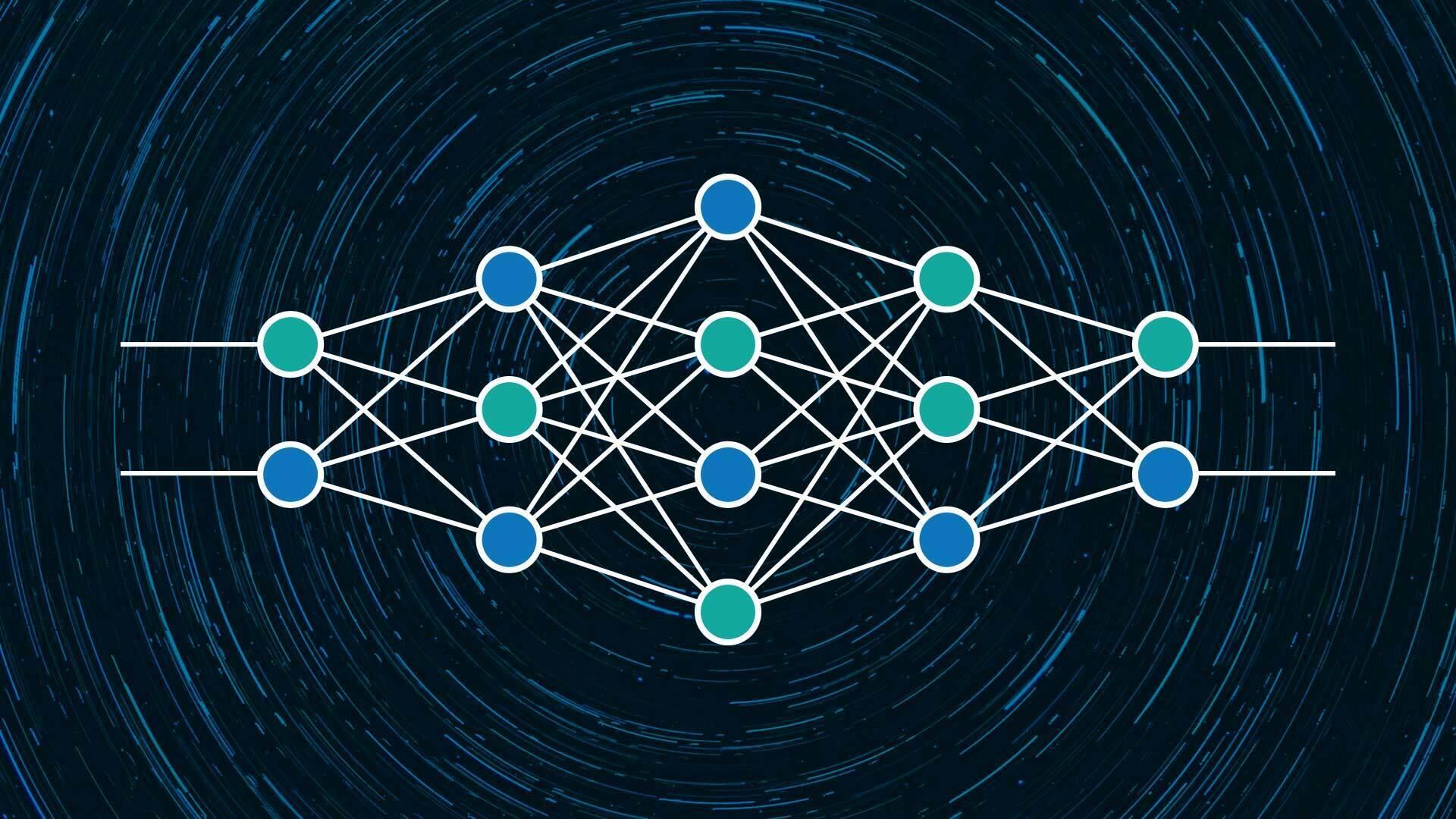
How Large Language Models Work and Why They Matter
Large Language Models (LLMs) are refined AI systems that process and generate human-like text based on the input they receive. These models, built on neural networks, learn from vast amounts of data and make predictions about what comes next in a sentence, based on context. The training process involves analyzing patterns, grammar, facts, and even styles to understand language in a way that enables them to respond coherently and contextually. Essentially, they don’t just memorize data; they learn how to understand and produce language.
What makes LLMs remarkable is their ability to generate text that is not only contextually relevant but also stylistically varied. Users can engage with these models in a conversational manner, asking questions and receiving answers that mimic human dialogue. This functionality opens up a world of possibilities, making them invaluable in various applications, including:
- Customer Support: Automating responses to common queries.
- Content Creation: Assisting writers in generating ideas or drafting articles.
- Translation: facilitating communication across different languages.
- Education: Providing tailored tutoring and learning assistance.
LLMs also have a profound impact on industries by improving the efficiency and effectiveness of tasks that once required significant human intervention. They not only process information faster but also learn and adapt with each interaction, becoming more accurate over time. This adaptability is why developers and businesses are keen on integrating LLMs into their workflows. Their ability to provide insights and automate mundane tasks allows human employees to focus on more strategic initiatives.
However, it’s essential to recognize the ethical considerations surrounding LLMs. Issues such as bias in training data and the potential for misuse must be addressed to ensure that these technologies are used responsibly. Developers are increasingly focusing on creating guidelines and frameworks to mitigate these risks, ensuring that the benefits of LLMs are realized without compromising integrity or fairness.
As we continue to explore the capabilities of LLMs, it’s clear that their influence will only grow. The potential for LLMs to reshape communication, education, and numerous other sectors is immense, making them a crucial element of our technological future.
The Top Benefits of Using Large Language Models in Everyday Applications
Large Language Models (LLMs) are transforming the way we interact with technology, offering numerous benefits that enhance our daily lives. One of the most significant advantages is their ability to understand and generate human-like text, which makes them ideal for a variety of applications.From customer support to content creation, LLMs can streamline processes, save time, and improve user satisfaction.
Another key benefit of using LLMs is their versatility. They can be customized for specific tasks,including:
- Chatbots and virtual assistants
- Translation services
- Personalized learning experiences
- Content generation for blogs and articles
This adaptability means that businesses and individuals can leverage LLMs for a multitude of purposes,increasing productivity and efficiency across various sectors.
Moreover, LLMs can significantly enhance creativity and innovation. By generating unique ideas and content, they can inspire users and help overcome creative blocks. For instance, writers can use llms to brainstorm plot ideas or generate dialogue, while marketers can develop engaging ad copy tailored to their target audience. This collaborative approach to creativity fosters an environment where ideas can flourish.
LLMs also contribute to improved accessibility. With their ability to process and produce natural language, they can assist individuals with disabilities by providing text-to-speech capabilities, real-time transcription, and other supportive technologies. This ensures that information and services are available to a broader audience, promoting inclusivity in the digital age.
the integration of LLMs in everyday applications promotes data-driven decision-making. By analyzing large amounts of text data, LLMs can uncover insights and trends that may not be instantly apparent. This empowers businesses and individuals to make informed choices, driving growth and enhancing overall performance.
| Benefit | Description |
|---|---|
| Understanding Human Language | Generates and interprets human-like text. |
| Versatility | Customizable for various applications. |
| creativity Enhancement | Inspires new ideas and content creation. |
| Accessibility Improvement | Assists individuals with disabilities. |
| Data-Driven Insights | Uncovers trends from text data analysis. |
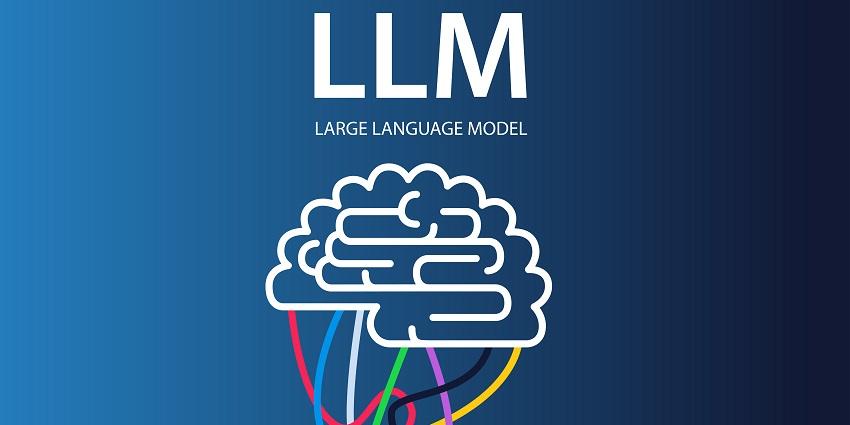
Exploring the Most Popular Large Language Models Available Today
Large Language Models (LLMs) have revolutionized the way we interact with machines, enabling them to understand and generate human-like text. These models, powered by deep learning techniques, have been trained on vast datasets, allowing them to grasp nuances in language and context. As businesses and developers explore the potential of LLMs, several contenders have emerged as frontrunners in the race for the most advanced language understanding and generation capabilities.
Among the leading LLMs,you’ll find:
- GPT-4 – OpenAI’s latest iteration,known for its impressive contextual understanding and creativity.
- BERT – Developed by Google, excelling in understanding the intricacies of language through bidirectional training.
- LLAMA - A lightweight model that balances performance and resource efficiency, making it ideal for smaller applications.
- Claude – A model by Anthropic focused on ethical AI and interpretability, ensuring safer AI interactions.
These models are not just tools; they are gateways to innovation. Developers are utilizing them for various applications, from chatbots and virtual assistants to content creation and data analysis. The versatility of these llms allows businesses to tailor their solutions, ensuring that they meet specific needs while enhancing productivity and engagement.
| Model | Strengths | Best Use Cases |
|---|---|---|
| GPT-4 | Contextual understanding, Creativity | Creative writing, personal assistants |
| BERT | Bidirectional context, Precision | search engines, Text classification |
| LLAMA | Efficiency, Accessibility | Mobile apps, Lightweight tasks |
| claude | ethical AI, Transparency | Safety-focused applications, User interaction |
The rapid progress of LLM technology has sparked a surge of interest among industries looking to harness AI for competitive advantages. The potential applications are virtually limitless, paving the way for smarter, more intuitive systems that can learn and adapt over time. As companies continue to explore these advanced models, the landscape of human-computer interaction is set to be transformed.
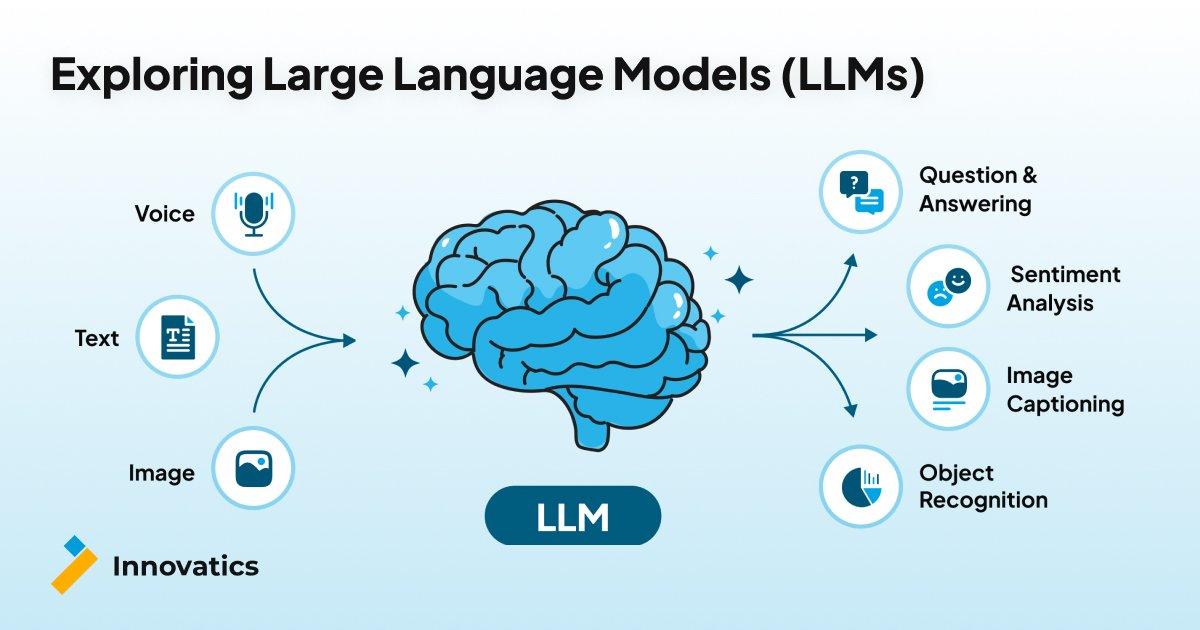
Key Features to Look for When Choosing a Large Language Model
When navigating the landscape of Large Language Models (LLMs), it’s crucial to identify the essential features that align with your needs. With rapid advancements in AI, the capabilities of these models vary significantly, making it imperative to evaluate them carefully before making a decision.
Performance and Accuracy: One of the most critical aspects to consider is the model’s performance. Look for benchmarks that demonstrate its accuracy in understanding and generating human-like text. The following criteria can definitely help you assess performance:
- Natural Language understanding: How well does the model comprehend context, intent, and nuances?
- Text Generation Quality: Is the generated text coherent, relevant, and engaging?
- Response Time: How quickly does the model generate output?
Scalability: As your needs grow, the chosen model shoudl seamlessly scale. Evaluate if it can handle increasing amounts of data and user requests without sacrificing performance. consider whether the model integrates easily with other systems,which can enhance its usability in complex applications.
Customization Options: Flexibility is key. Many LLMs offer customization features, allowing developers to fine-tune the model for specific tasks or industries. Look for models that provide:
- Fine-tuning capabilities: Ability to adapt the model to your dataset.
- API access: Easy integration for personalized applications.
- Pre-trained versus custom trained: Options for starting with a robust base model or building from scratch.
Cost and Licensing: it’s vital to understand the cost structure and licensing terms associated with the model. Some models are available for free, while others may require a subscription or a one-time payment. Consider factors such as:
- Budget constraints: What can you realistically spend?
- Value provided: Does the cost align with the features and performance you receive?
- Licensing terms: Are there restrictions on how you can use the model?
| Feature | Importance |
|---|---|
| Performance | High |
| Scalability | Medium |
| Customization | High |
| Cost | Medium |
The Role of Fine-Tuning in Enhancing Large Language Model Performance
Fine-tuning is a critical process that significantly boosts the performance of large language models (LLMs). By tweaking the pre-trained models on a specific dataset, we can adapt them to understand particular domains or tasks more effectively.This process not only enhances the model’s accuracy but also tailors its capabilities to meet specific user needs.
One of the most compelling aspects of fine-tuning is its ability to bridge the gap between general language understanding and specialized knowledge. For instance, a model like GPT-3 has a broad understanding of language, but when fine-tuned on medical texts, it can excel in generating relevant and accurate medical advice. This adaptability makes LLMs incredibly versatile!
Here are a few key benefits of fine-tuning:
- Improved Accuracy: Tailored training leads to more precise outputs.
- Reduced Bias: Fine-tuning on diverse datasets helps mitigate inherent biases present in the model.
- Enhanced Relevance: Models become more contextually aware, which is crucial for industry-specific applications.
- Cost Efficiency: Fine-tuning often requires less computational power than training a model from scratch.
Moreover, fine-tuning can be performed using various techniques such as supervised learning, reinforcement learning, or even unsupervised methods. Each technique can yield different results depending on the specific goals of the application.the choice of method is influenced by the amount of data available and the desired performance outcomes.
To illustrate the impact of fine-tuning on performance, consider the following table comparing a standard LLM and a fine-tuned version:
| Model type | Accuracy (%) | Training Time (hours) |
|---|---|---|
| Standard LLM | 75 | 10 |
| Fine-Tuned LLM | 90 | 2 |
This comparison clearly shows that fine-tuning not only enhances accuracy but also significantly reduces the time required for effective training. As organizations increasingly rely on LLMs for critical applications—from customer support to content generation—the importance of fine-tuning cannot be overstated. By investing in this process, businesses can unlock the full potential of their language models and provide more value to their users.
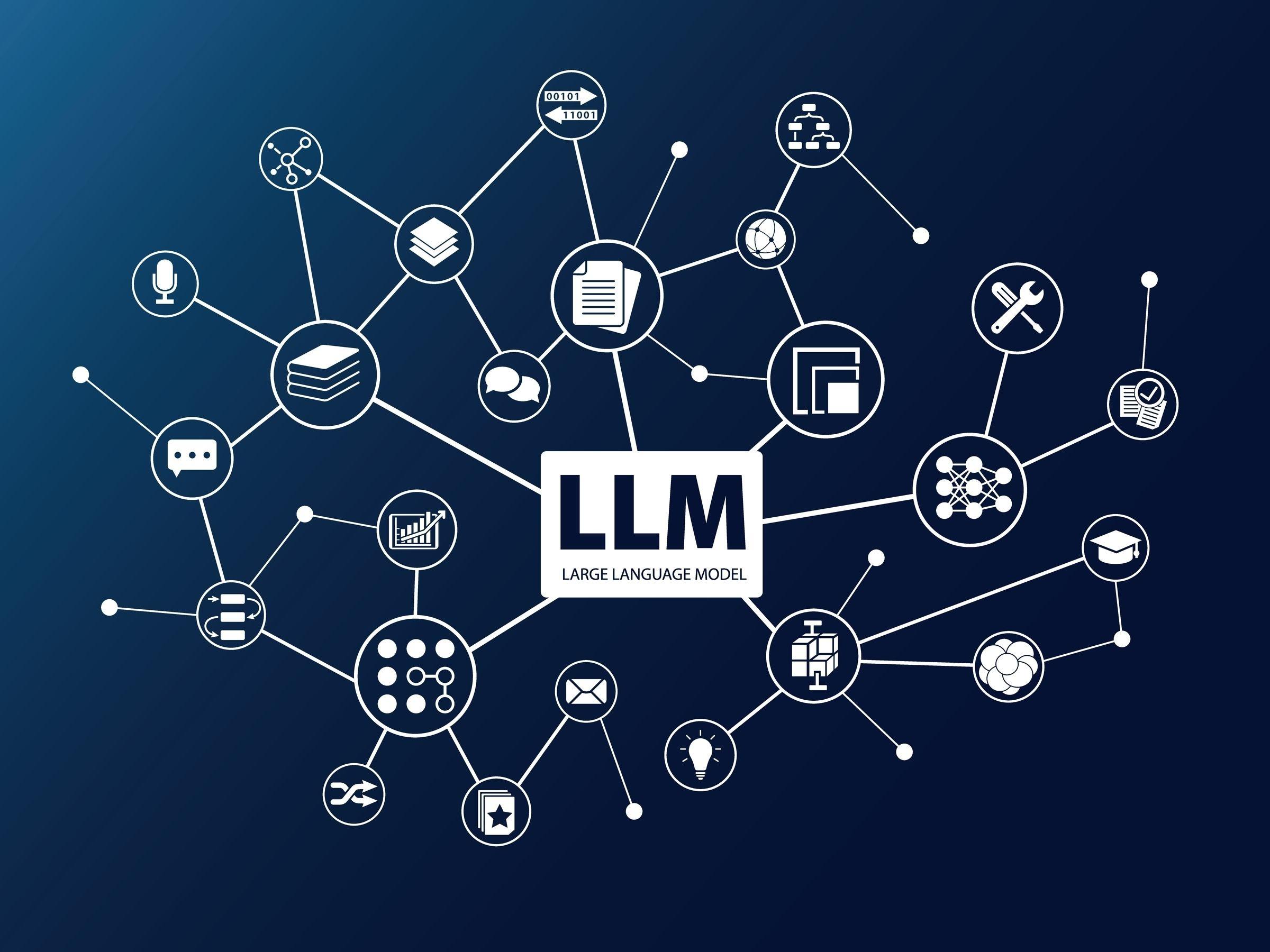
Real-world Applications of Large Language Models You Should Know About
Large Language Models (LLMs) are revolutionizing various industries by providing capabilities that enhance productivity, creativity, and user engagement. Here are some compelling real-world applications that showcase the versatility of LLMs:
- Customer Service automation: Companies are leveraging LLMs to create intelligent chatbots that handle customer inquiries, complaints, and support requests 24/7.These chatbots can understand context, provide relevant responses, and even learn from past interactions to improve over time.
- Content Generation: LLMs are being utilized to generate high-quality written content for blogs, marketing campaigns, and social media. This not only saves time but also allows for the creation of personalized and engaging material tailored to specific audiences.
- Language Translation: With the ability to understand and generate human-like text in multiple languages, LLMs are enhancing communication across global markets by providing accurate and nuanced translations.
- Educational Tools: They are being integrated into educational platforms to provide personalized learning experiences. Students can receive tailored feedback, explanations, and tutoring based on their individual needs and learning pace.
- Healthcare Support: LLMs assist in sifting through massive amounts of medical data to provide insights, support clinical decision-making, and help in patient interaction by answering common health questions.
To illustrate the impact of LLMs, consider the following table highlighting their efficiencies in various applications:
| Application | Efficiency Gain | Impact |
|---|---|---|
| customer Service | Up to 70% faster response times | Improved customer satisfaction |
| Content Generation | 50% reduction in creation time | Greater content volume |
| Language Translation | 95% accuracy in common phrases | Enhanced global communication |
| Education | 30% increase in learning outcomes | Better student engagement |
| Healthcare | Significant time savings for practitioners | Better patient care |
As LLM technology continues to evolve, we can expect even more innovative applications to arise. The potential for these models to transform industries is immense, making them a vital component of the modern technological landscape.
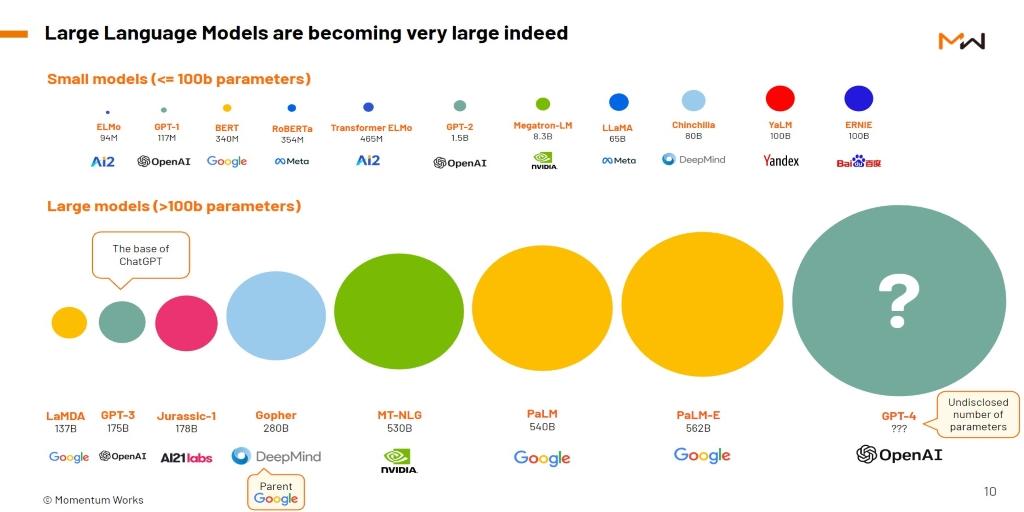
Comparing the Leading Large Language Models for Your Needs
When it comes to selecting a large language model (LLM) that fits your specific needs, understanding the strengths and capabilities of the leading options is essential. Each model comes with its unique features, making it crucial to align your choice with your intended applications, whether for chatbots, content generation, or data analysis.
Here’s a swift comparison of several prominent LLMs, highlighting their key attributes:
| Model | Strengths | Best For |
|---|---|---|
| GPT-4 | Highly versatile, excellent understanding of context | Creative writing, complex problem-solving |
| BERT | Strong in understanding nuances, great for search queries | Text classification, sentiment analysis |
| T5 | Flexible text-to-text framework, good at multiple tasks | Translation, summarization, question-answering |
| XLNet | Captures bidirectional context, robust performance | Natural language understanding tasks |
To further tailor your selection, consider the following criteria:
- Application Purpose: Determine if you need the model for conversation, content generation, or analytical tasks.
- Performance Metrics: Look for benchmarks in accuracy, speed, and scalability relevant to your domain.
- API Accessibility: Evaluate how easily you can integrate the model into your existing systems.
- Community and Support: A strong developer community can often provide better resources and troubleshooting assistance.
Ultimately, the choice of a large language model should be driven by both your immediate needs and long-term goals. Each model has its own unique offering, which can significantly influence project outcomes. By carefully analyzing their strengths, you can make a more informed decision that aligns with your vision.
future Trends in Large Language Models that Could Change the Game
As we look toward the horizon of artificial intelligence, emerging trends in large language models (LLMs) are poised to redefine how we interact with technology. These advancements promise not only to improve the capabilities of LLMs but also to expand their applications across various industries, making them more integral to our daily lives.
One significant trend is the move toward multimodal capabilities. This evolution allows models to process and generate content beyond just text, incorporating images, audio, and even video. By integrating diverse data types, LLMs can provide richer, more context-aware interactions. As a notable example, imagine a model that understands a user’s spoken queries and complements them with relevant visual content, creating a seamless and immersive experience.
Another exciting development is the focus on personalization. Future LLMs are expected to leverage user data more effectively, tailoring responses based on individual preferences and past interactions. This could lead to a more engaging user experience where the model remembers previous conversations, adjusts its tone, and even suggests content that aligns with the user’s interests.Such personalized interactions can enhance learning, make recommendations more relevant, and ultimately drive deeper engagement.
Moreover, we are likely to see increased emphasis on ethical AI practices. As LLMs become more prevalent,the importance of ensuring these models are unbiased and transparent will grow. Future iterations will likely incorporate advanced algorithms designed to identify and mitigate bias, alongside robust frameworks for ethical usage. This commitment to responsible AI will not only build user trust but also foster a more equitable digital landscape.
the integration of real-time learning is set to revolutionize LLMs. Rather than relying solely on static datasets, future models may utilize mechanisms for continuous learning from interactions. This means LLMs could adapt and evolve with user feedback, improving their accuracy and relevance over time. Such dynamic capabilities would transform LLMs from mere reactive tools into proactive collaborators that grow and refine their abilities as they interact with users.
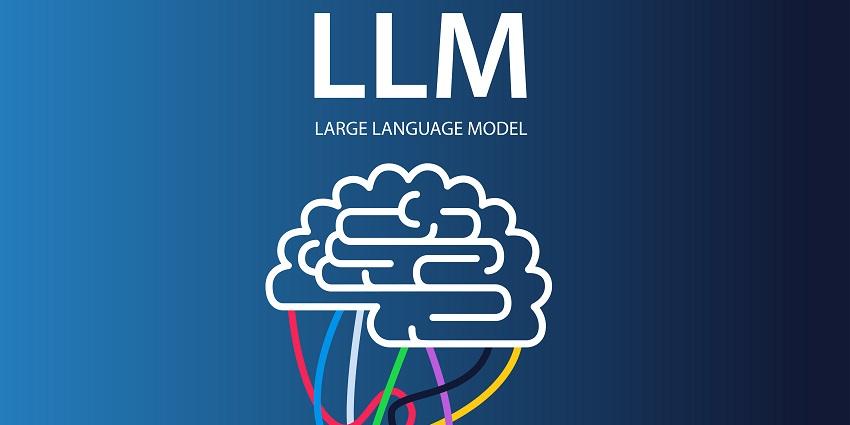
Choosing the Right Large Language Model for Your Project or Business
When it comes to selecting a large language model (LLM) for your project or business, the choice can feel overwhelming. With a multitude of options available, understanding the core capabilities of each model is essential to making an informed decision that aligns with your specific needs. Here are some key factors to consider:
- Purpose and Use Case: Determine what you need the LLM for. Are you looking for chatbots, content generation, or maybe language translation? Different models excel in different areas.
- Model Size and Complexity: Larger models often deliver better performance, but they also require more computational resources. Assess your infrastructure capabilities before choosing.
- Cost and Accessibility: Evaluate the pricing structures and accessibility of the models. Some may offer free tiers while others require subscriptions or one-time payments.
- Community and Support: Look for models that have a strong community and robust support. This ensures you can easily find help and resources when needed.
Additionally, consider the ethical implications of the language model you choose. Some models emphasize responsible AI usage, offering guidelines on how to deploy their technology ethically. Ensuring that your LLM aligns with your company’s values and ethical standards can help mitigate potential challenges down the line.
Here is a quick comparison table to help you visualize some of the top LLMs available:
| Model | Key Features | Best for |
|---|---|---|
| GPT-3 | Versatile, high-quality text generation | Content creation, conversational agents |
| BERT | Excellent for understanding context | Search optimization, question answering |
| T5 | Text-to-text framework | Translation, summarization |
| XLNet | Enhanced training techniques | Language tasks that require deep understanding |
Ultimately, the right LLM for your business will depend on a careful assessment of these factors, along with your immediate and long-term goals. taking the time to evaluate options and align them with your project requirements will maximize the benefits and minimize risks associated with adopting new technology.
Frequently Asked Questions (FAQ)
sure! here’s a Q&A style article about “What is a Large Language Model (LLM)? 14+ Best llms” with a conversational and persuasive tone.
Q: What exactly is a Large Language Model (LLM)?
A: Great question! A Large Language model (LLM) is a type of artificial intelligence designed to understand and generate human language.Think of it as a sophisticated tech wizard that can read, comprehend, and even create text that sounds like it was written by a person. It’s trained on vast amounts of text data, allowing it to predict what comes next in a sentence and understand context, tone, and even nuances of language.
Q: Why are LLMs becoming so popular?
A: LLMs are all the rage because they can perform a wide range of tasks that make our lives easier! From writing essays and generating creative content to answering questions and assisting in programming, these models are versatile tools that can enhance productivity. Their ability to generate coherent and contextually relevant text makes them invaluable in many industries,including education,marketing,and customer service.
Q: What are some real-world applications of LLMs?
A: The applications are practically endless! for example, businesses use LLMs for chatbots that provide customer support, while educators might utilize them to help students with writing assignments. Content creators leverage LLMs for brainstorming ideas or even drafting articles. Healthcare institutions use them to sift through massive datasets and extract meaningful insights. The possibilities are truly exciting!
Q: How do LLMs work?
A: At their core, LLMs use a technique called deep learning, primarily relying on neural networks. They are trained on diverse datasets to learn patterns in language, which enables them to generate text based on prompts. When you ask a question, they analyze the context and generate a response that fits the style and information you’re looking for. It’s like having a conversation with a really informed friend!
Q: Are there different types or categories of llms?
A: Absolutely! There are several LLMs out there, each with its strengths. some are designed for specific tasks,while others,like GPT-3 or BERT,are general-purpose. Depending on what you need—be it conversational AI, text summarization, or even translation—there’s likely an LLM that fits the bill perfectly!
Q: What are some of the best LLMs available today?
A: you’re in for a treat! Here are some of the top contenders:
- GPT-3 (OpenAI): Known for its diverse applications and human-like text generation.
- BERT (Google): Excellent for understanding the context of words in search queries.
- T5 (google): great for text-to-text tasks, transforming one type of text to another seamlessly.
- roberta (Facebook): A robust variant of BERT, optimized for performance.
- xlnet: Breaks the conventional training methods to improve language understanding.
- DistilBERT: A smaller, faster version of BERT, making it efficient for many applications.
- claude (Anthropic): Focuses on safety and reliability in AI-generated responses.
- ChatGPT: User-pleasant and great for conversational tasks.
- ERNIE (Baidu): Tailored for Chinese language processing and understanding.
- Turing-NLG (Microsoft): One of the largest models designed for natural language generation.
- grok (xAI): A new player with exciting potentials in conversational AI.
- LLaMA (Meta): A lightweight model designed for research purposes.
- Megatron-Turing NLG: A powerhouse model for high-performance language tasks.
- Flan-T5: Focused on instruction-based learning, making it adaptable for specific queries.
Q: How can I choose the right LLM for my needs?
A: Choosing the right LLM really depends on what you want to achieve.If you’re looking for conversational capabilities, something like GPT-3 or ChatGPT might be ideal. For tasks requiring a strong understanding of context, BERT or RoBERTa could be your best bet. Think about your specific needs,and don’t hesitate to experiment with a few options to see what works best!
Q: Are there any concerns or limitations with LLMs?
A: Yes,while LLMs are powerful,they’re not perfect.They can sometimes generate biased or inaccurate information based on the data they were trained on. Additionally, they might not always understand nuanced human emotions or cultural contexts. It’s essential to use them wisely and double-check their outputs,especially in sensitive applications.
Q: Is it worth investing time in learning about LLMs?
A: Absolutely! As LLMs continue to evolve, they’re becoming a crucial part of many industries. Understanding how they work and how to leverage their capabilities can give you a significant edge, whether in your career or personal projects. Plus, it’s an exciting field that’s constantly changing, so there’s always something new to learn!
Q: Where can I get started with LLMs?
A: There are plenty of resources available! Websites like OpenAI offer documentation and guides for their models. You can find online courses focused on AI and machine learning, and platforms like Hugging Face have user-friendly tools for experimenting with different LLMs. Dive in,explore,and don’t be afraid to get your hands dirty!
There you go! I hope this Q&A helps clarify what large language models are and inspires readers to explore them further.
Key Takeaways
As we wrap up our exploration of Large Language Models (LLMs) and the standout examples shaping the AI landscape, it’s clear that these powerful tools are more than just a technological marvel—they’re changing the way we communicate, learn, and even create. From enhancing customer service interactions to generating content that captivates audiences,LLMs are proving to be indispensable allies in our digital age.
So, whether you’re a tech enthusiast eager to dive deeper into the world of AI or a business leader considering how LLMs could revolutionize your operations, there’s never been a better time to embrace this transformative technology. Remember, the future is being written right now, and with the right LLM by your side, you can help shape the narrative.
If you found this article insightful, don’t hesitate to share it with your colleagues and friends. After all, the more we understand these powerful models, the better equipped we are to leverage them for innovation and growth.Let’s keep the conversation going—what are your thoughts on the impact of LLMs? Join us in the comments below, and let’s explore the future of AI together!

